Pay a Visit to Wuhan
2018-01-02
Wuhan is an inter- esting large city in the inland central area of China that somehow feels less modernized than Chinas coastal cities or Beijing, but it is one of Chinas main high-tech, education and financial centers. It is Chinas 10th largest city. It is interesting for tourists because there are scenic areas and the big Yangtze River. The people are unusually cordial to for-eigners. Because it is right in the middle of the navigable part of the Yangtze River between Shanghai on the coast and Sichuan and Chongqing far to the west, it has long been a transportation hub. The old town of Hankou that is now a part of modern Wuhan was Chinas second largest commercial center after Shanghai during the 1800s and early part of the 1900s.
Wuhan is now the capital of Hubei Province that is an inland province. It has a population of about 10 million people in its administrative area, with about 6,000,000 people in the main urban area and about 4,000,000 people in surrounding suburbs and towns. It is divided into three parts by the Yangtze River and Han River. The Wuchang district is the education center with many universities and research centers, the Hankou area is the financial and business district, and the Hanyang district is the industrial center.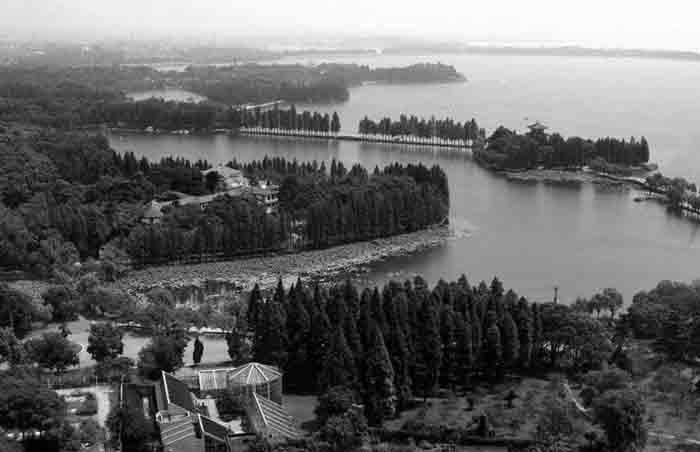
The two Wuhans attractions listed below are the mainly important historic architectures and modern buildings in Wuhan. Among hundreds of places of historic interest and scenic beauty, the Yellow Crane Towers and the East Lake Park should be the four most famous ones.
Yellow Crane Tower
Yellow Crane Tower is located on Snake Hill in Wuhan, Hubei Province. Enjoying the fame of ‘The First Scenery under Heaven, it is one of the most renowned towers south of the Yangtze River. Its cultural significance led to its being made the symbol of Wuhan City.
According to legend, the tower was built by the family of an old pothouse owner living in Wuhan City long ago, named Old Xin. One day, a shabbily dressed Taoist priest came to the pot- house and asked for some wine. Old Xin paid no attention to him, but his son was very kind and gave the Taoist some wine without asking for money. The Taoist priest visited the pothouse regularly for half a year when one day the Taoist said to the son that in order to repay his kindness, he would like to draw a crane on the wall of the pothouse, which would dance at his request. When people in the city heard of this, they flocked to the pothouse to see the dancing crane. The Xin family soon became rich and they built the tower as a symbol of gratitude to the Taoist priest.endprint
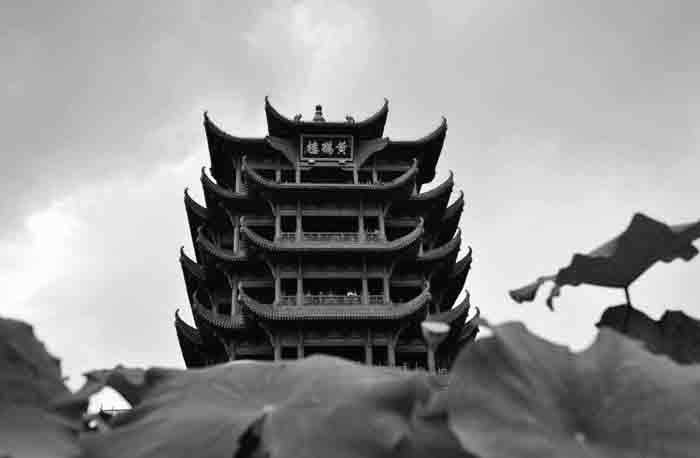
The Yellow Crane Tower has a very long and complicated history. It was first built in 223, during the Three Kingdoms Period (220 - 280). Due to the ideal location, it was built by Sun Quan (182- 252, King of Wu) as a watchtower for his army. After hundreds of years, its military function was gradually forgotten and the tower was enjoyed mainly as a picturesque location. During the Tang Dynasty (618 - 907), many popular poems were written in praise of the Yellow Crane Tower. It was these poems that made the Tower so renowned and induced for people to visit. During the following centuries, it was destroyed and rebuilt several times. During the Ming(1368 - 1644) and Qing (1644 - 1911) Dynasties alone the tower was destroyed seven times and rebuilt seven times. In 1884, it was completely destroyed in a fire and was not rebuilt until 1981. The tower had different architectural features in different dynasties. However the tower which stands today is based on the one designed during the Qing Dynasty. It stands 51.4 meters (about 168 feet) high and has five floors. The appearance of the tower is the same regardless of the direction it is viewed from. The roof is covered by 100,000 yellow glazed tiles. With yellow upturned eaves, each floor seems to have been designed to resemble a yellow crane spreading its wings to fly.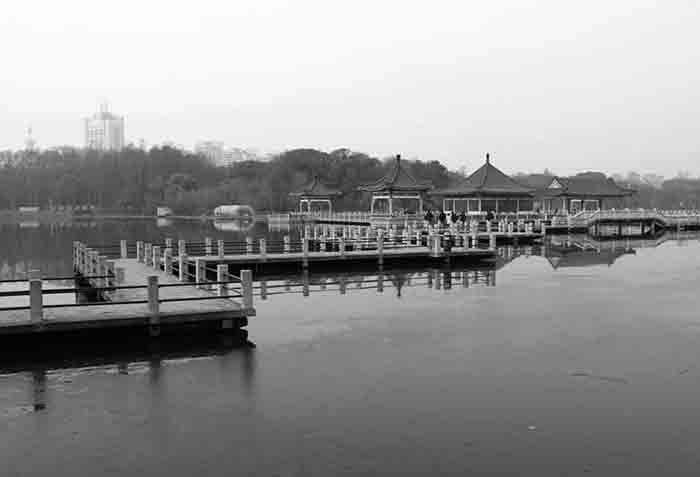
The tower offers visitors an abundance of things to see. The exhibit on each floor has a theme, for example, the theme of the first floor is about legend. On the wall, there is a nine-meter (about 30 feet) long and six-meter (about 20 feet) wide painted porcelain picture which depicts clouds, rivers and cranes to represent a romantic mood in the heaven. The third floor mainly shows poems written to praise the tower in different dynasties. On top of the tower, visitors are treated to a fabulous panoramic view of the Yangtze River, its bridge and the surrounding buildings in Wuhan City. Outside the tower, there are bronze yellow cranes, memorial gateways and pavilions.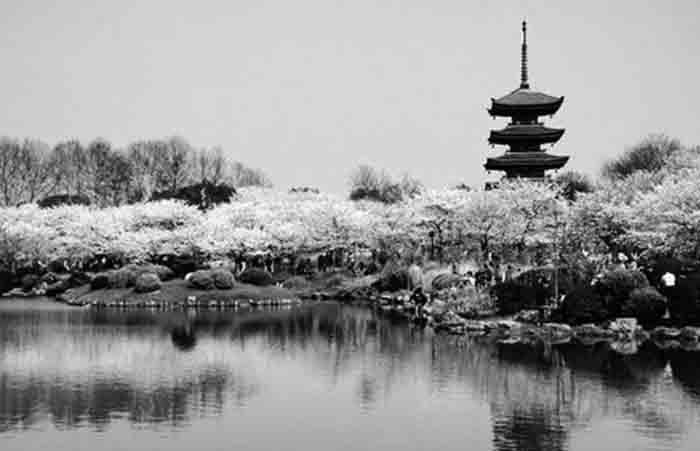
East Lake Scenic Area
East Lake, the biggest scenery tourist attraction in Wuhan and also the largest lake within a city in China, is located on the south bank of the Yangtze River and in the east suburb of Wuchang. It covers an area of 87 square kilometers(33 square kilometers of water area) that is five times greater than the area of the West Lake in Hangzhou . Because of its winding banks and crisscrossing ponds and brooks, it is called ‘a lake with 99 bays. The East Lake Scenic Area was formed from many famous scenic spots along the bank. The six major ones are Tingtao (Listening to Surging Waves), Mo Hill (Millstone Hill), Luoyan (Diving Wild Goose), Baima (White Horse),Chuidi (Playing Flutes), and Luohong Hills. Among the six scenic areas, Tingtao and Mo Hill scenic areas are the most two notable and are open to visitors.endprint
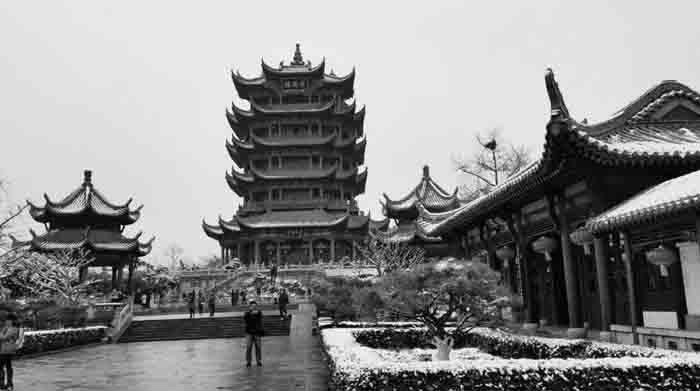
The lake gate opens to the Tingtao scenic area featuring the rare sequoia especially elegant in late autumn. The Listening-to-the-Waves Tower (Tingtao Xuan), with its classic elegance is one of the famous buildings in this area, along with Land of Water and Cloud (Shuiyun Xiang) which serves as a teahouse, and the Tingtao Inn of Wine, a restaurant offering local fish dishes. On the north, the center of this area, is the PoetryReciting Pavilion (Xingyinge), built for memorizing works of Qu Yuan, the great patriotic poet of the State of Chu(one of the seven warring states before Qin (221BC-206BC) in Chinas first feudal dynasty). Many exhibits about Qu Yuan are featured in this building including his great literary masterpieces. In addition, the first allegory sculpture park in China is here displaying wonderful sculpture and allegories.
Characterized by beautiful landscape, abundant plants, the customs of the State of Chu and unique gardens, the Mo Hill Scenic Area attracts many tourists. In this area, the Chu cultural theme park displays the Chu culture in China. The Botanical Viewing Garden where more than 360 kinds of plants are nursed in 13 special gardens with flowers blooming all the year round - orchids and cherry blossoms in spring, lotus in summer, osmanthus in autumn, and plum blossoms in winter - is also admirable. Two of the most famous are the Cherry Blossom Garden said to be one of the worlds three cherry blossom capitals along with Hirosaki in Japan and Washington in America, and the Plum Blossom Garden which is listed as the top plum garden.endprint
